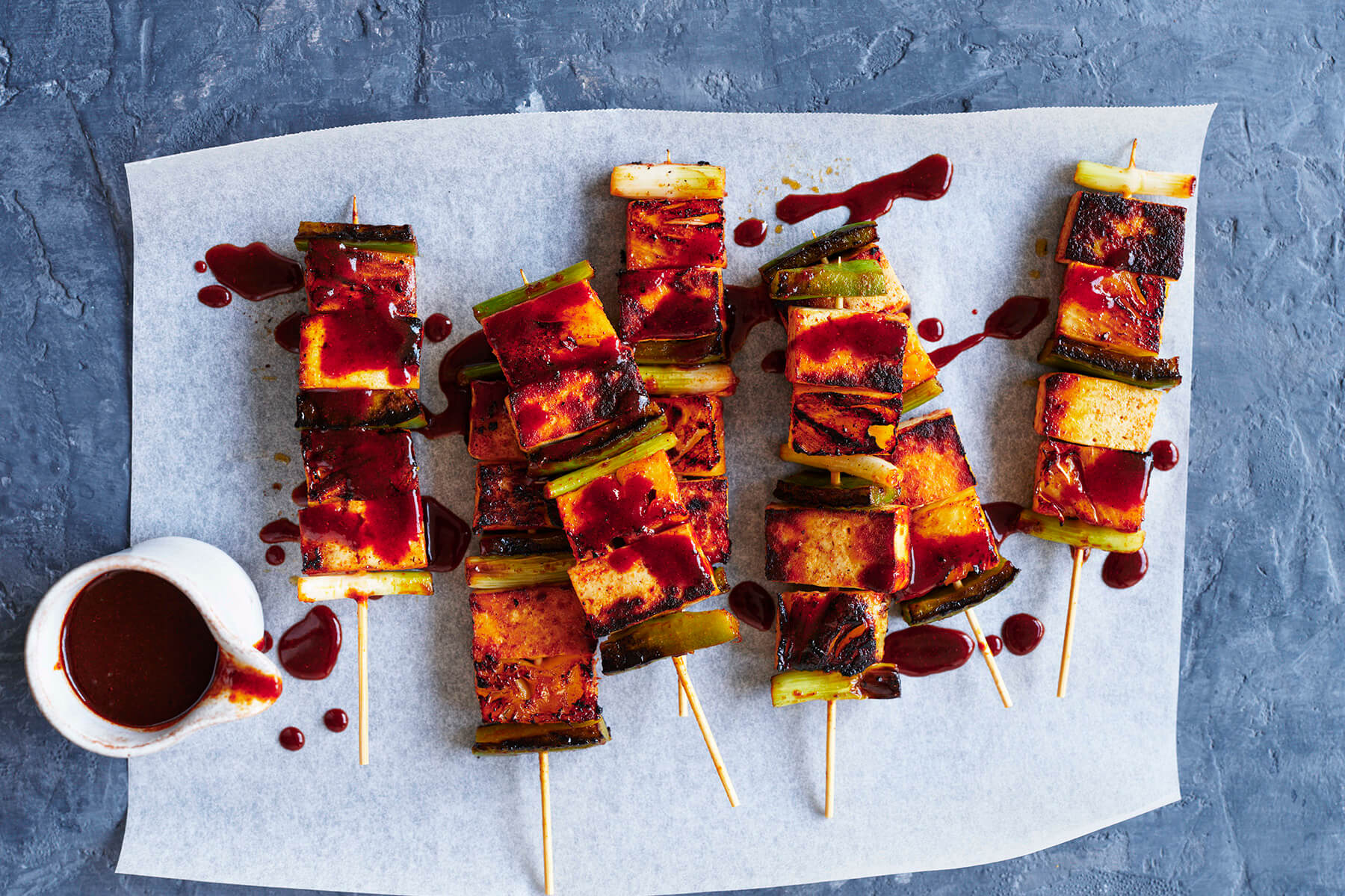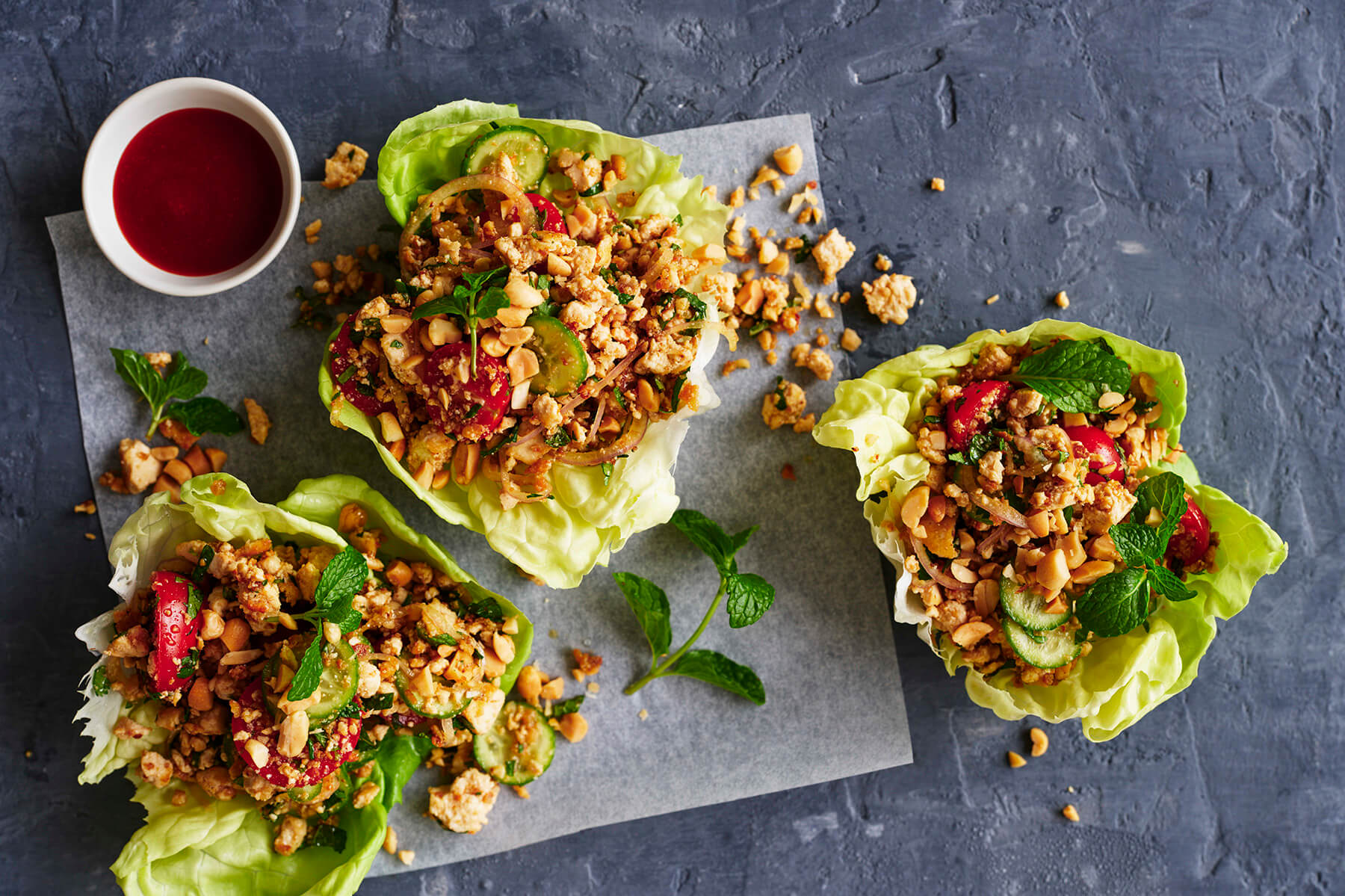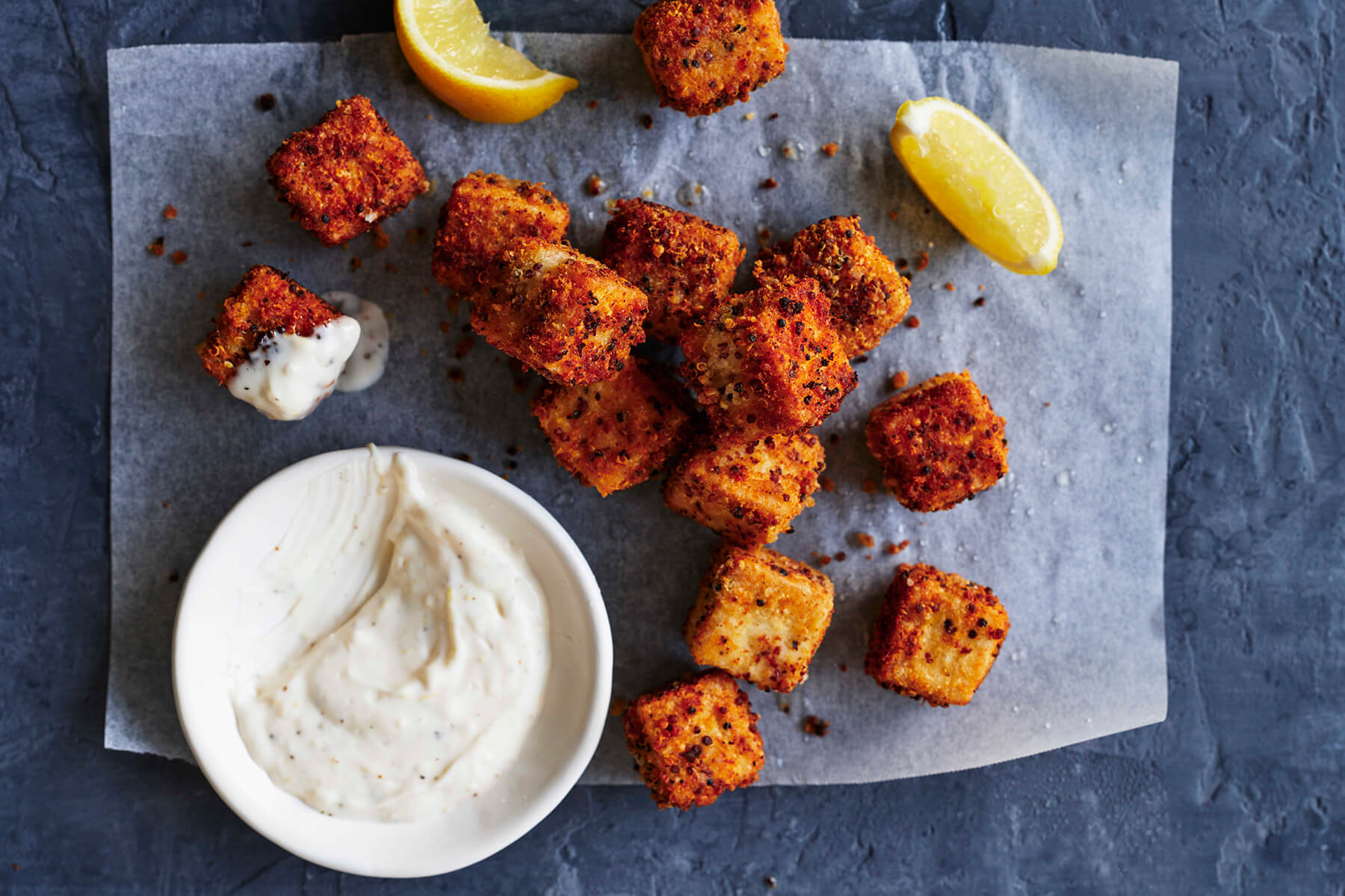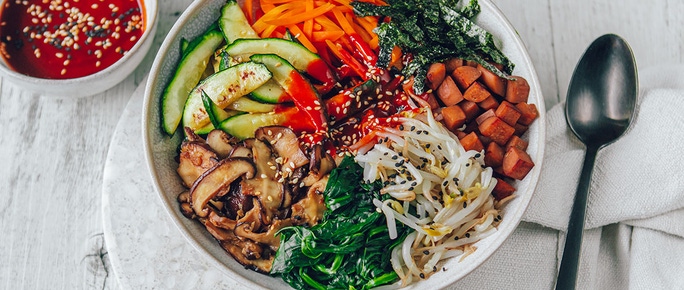
Tasty tofu tips
Delicious and protein-rich tofu is made from the curd of soy milk.
It comes in a variety of textures from silky to firm making it an incredibly versatile ingredient and a simple way to load your dishes with extra nutrients.
Tofu sometimes gets a bad rap for being bland but this neutral flavour is its biggest asset. Whether it’s the zesty tang of lemon or the aromatic flavour of garlic, tofu soaks up flavours, making it the perfect protein base for any dish.
What is the best type of tofu to buy?
If you haven’t used tofu it can be a daunting ingredient to try because there are so many options. The success of your recipe will come down to choosing the right variety of tofu for the dish. There are four main varieties of tofu – extra firm, firm, soft and silken. Most recipes will specify which type you need.
- Extra firm and firm tofu hold their shape well for cooking. As these varieties contain less water, they are also denser in nutrients making them higher in protein and calcium. Choose firm or extra firm tofu for barbequing, stir fries, deep frying, laksas and curries.
- Soft tofu has a crumbly texture that makes it an ideal substitute for ricotta cheese. Use it as a swap for mincemeat to make your own meat-free burgers, scramble it like eggs or use it as a filling for dumplings and pastas.
- Silken tofu has an almost custard-like consistency which makes it perfect to blend and use in sweet dishes like vegan ice cream and cheesecakes. It’s a great base to hold flavours for dips, it can be used in soups or even your morning smoothie to make them extra creamy, and is also the style of tofu you often see at restaurants simply drizzled with delicious dressings and sauces.
- Marinated tofu, now readily available in supermarkets, can be diced or cubed and added into a salad as a swap for cold chicken or fish, providing an excellent source of protein.
Try it
Unsure how to cook with tofu?
We have developed a brand-new free recipe book called Easy Eats full of tasty, healthy and budget friendly recipes to help you on your vegetarian journey. Here are 3 simple tofu recipes from the book that will have you adding tofu to your regular meal rotation.
Smoky BBQ tofu skewers
In no more than 20 minutes and with only a few pantry staples, you can whip up these tasty vegetarian tofu skewers the whole family will love. They are perfect for an easy BBQ alternative and a great way to start cooking with tofu.
Tofu larb lettuce cups
This tangy and delicious take on larb lettuce cups uses crumbled tofu to get a similar consistency to the minced meat traditionally used. It showcases just how easy and versatile tofu can be.
Crispy lemon and Parmesan tofu bites with aioli
Serve up these golden-brown morsels of tofu to convert the kids. They are almost nugget-like with their crunch while providing a healthy dinner loaded with protein, iron and calcium.
What makes tofu so good for you?
As a soy food, tofu has all the health benefits of soy. It is high in protein and is a source of iron and calcium. Tofu also contains isoflavones – a naturally occurring, hormone-like compounds. Isoflavones have important antioxidant and anti-inflammatory properties. They also mimic some of the positive effects of the hormone oestrogen like reducing cholesterol and hot flushes. A growing number of studies have linked eating soy foods, like tofu, soy milk and miso, with increased protection from breast cancer and better survival rates. Eating more soy foods has also been shown to help with lowering blood pressure, cholesterol levels, and risk of heart disease.
How do you to store tofu?
Once opened, if you have any left over, drain it of any liquid that it comes with and place it in an airtight container and cover with fresh cold water, then store in the fridge. Drain and replace the water daily to keep it at its best. Use within a week.

The latest nutrition advice, plus health and wellness tips delivered to your inbox monthly




